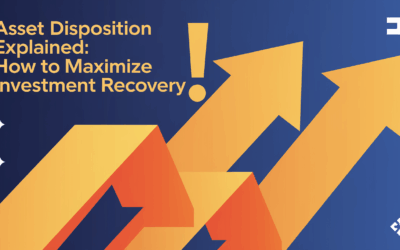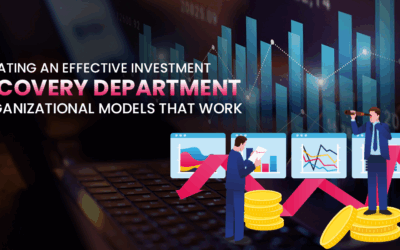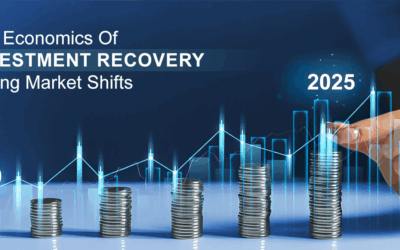Environmental compliance audits of waste disposal and recycling vendors are an important aspect of Salt River Project’s (SRP) efforts to minimize long-term Superfund liability. SRP’s Vendor Audit Program started in the early 1980s and originally focused on Treatment Storage and/or Disposal Facilities (TSDFs) for hazardous waste, and companies involved with recycling of electrical oils. Over the years, the program has expanded
to include solid waste landfills and companies that recycle materials such as batteries, scrap metal, tires, paper products, plastics, green waste, refrigerants and obsolete electronics.
Kelly May, CMIR, Salt River Project, introduced Lou Klejbuk during the 2014 Investment Recovery Seminar Session where Lou discussed how Salt River Project manages their waste/recycler vendor audit program.
SRP actively manages about 80 vendors that provide industrial waste disposal, material recycling or other environmental services. Vendor audits are conducted on a 3- to 5-year frequency depending on the compliance history, complexity of the facility, and historical risk of non-compliance. Based on this approach, SRP conducts approximately 20 vendor audits per year.
The process of evaluating waste disposal and recycling vendors consists of a thorough review of a vendor’s facility and operating practices, review of their regulatory compliance history, an 6 on-site visit, consideration of the financial strength of the company and evaluation of the vendor’s emergency response and/or environmental management systems.
Environmental vendor audits conducted by SRP include a review of the following 17 elements:
1. Operating Permits – Does the vendor operate with all applicable environmental permits, plans, licenses, certificates and filed notifications?
2. Compliance Status – When was the last time the facility has been inspected by an environmental regulatory agency and what were the results of the inspection?
3. Litigation Status – Are there any current or pending regulatory enforcement actions, and are there any criminal or relevant civil actions?
4. Financial and Business condition – Can the general financial health of the vendor be determined by a review of their income statement or balance sheet? SRP relies heavily on a calculated Altman Z-Score to determine financial viability of a potential vendor. (see bottom of page)
5. Superfund Status – Comprehensive Environmental Response, Compensation and Liability Act (CERCLA) and State Superfund – Is the vendor a Responsible Party (RP) or a Potential Responsible Party (PRP) at a federal or state Superfund site?
6. Location and Environmental Setting – Is the facility near environmentally sensitive areas, floodplains or residential buildings?
7. Company Size and Experience – How long has the vendor been in business (history at location), and what is the on-site management history?
8. Operation Status – What are the activities performed at the site? Examples include warehouse operations, dismantling, delivery and unloading of materials, treat- ment and processing units (type, function), storage of chemicals and products, and management of wastes that are generated onsite.
9. Community Relations – How is the vendor perceived by the local community? Are there any local/nationwide groups that could pose opposition to permit renewals?
10. Other large corporate customers – Does any one customer represent more than 10% of their business?
11. Customer Service – Does the vendor have a good customer service record
12. Site conditions – An on-site tour of the facility is an important activity of the audit process, and observations of work practices and housekeeping can provide insight into the management systems at the site. Additionally, implementation of policies, management of materials and examples of contamination or remediation can be observed during a site tour.
13. Contract Term/Insurance Requirements – Typically, a vendor will be able to provide an insurance certificate that states the limits of their insurance (General Liability, Automobile, Pollution, etc). The insurance limits should be evaluated for conformance with your minimum company requirements.
14. Closure and Post-closure funding – Some vendors that manage regulated waste must ensure that the site is properly closed and cleaned at the end of operations. These facilities must have up-to-date closure and post- closure funding plans in place that should state the amount of closure funding sources.
15. Environmental Management Systems – Does the vendor have prescribed environmental management procedures or programs that address the activities
at the site? Examples of environmental management systems may include storm water controls, management of waste generated at the facility or handling of recycled materials.
16. health and Safety – Does the vendor have effective personal protective equipment policies, provide adequate safety training to employees and address accidents?
17. Emergency Preparedness – Does the vendor have an Emergency Action Plan and/or Fire Prevention Plan that outlines the actions employees take in case of an emergency? What are the types of drills and/or training that are conducted at the site?
Following the audit, a vendor is evaluated as: (1) meeting all applicable regulations; or (2) not meeting some regulations, but issues can be quickly resolved; or (3) not meeting many regulations and exhibiting other significant non-compliance issues. On a case-by-case basis, the type of material disposed of or recycled and the proximity of a vendor to the SRP facility may also be a factor in the evaluation process.
Information gained throughout the environmental audit process is confidential and is used for SRP purposes only.
This evaluation is documented in a report, and the conclusions and recommendation are forwarded to the SRP operating groups that use (or intend to use) the vendor. The audited vendor does not receive a copy of the SRP internal report or receive formal notice of the audit results.
Overall, the SRP waste/recycler vendor audit program is an integral part of the vendor evaluation process. We continue to 7 conduct environmental audits of our active vendors and add three to five new vendors each year
The “Altman Z-Score”: how do you rate?
Like many large organizations, SRP uses the Altman Z-score as a credit-strength test that gauges a manufacturing company’s likelihood of bankruptcy. The Altman Z-score is based on five financial ratios that can be calculated from data found on a company’s annual 10K report (publicly traded companies).
 – Lou Klejbuk, Manager, EHS Audits, Salt River Project Tempe, Arizona
– Lou Klejbuk, Manager, EHS Audits, Salt River Project Tempe, Arizona
Explaining the “Altman Z-Score”
The Altman Z-score is calculated as follows:
Z-Score = 1.2A + 1.4B + 3.3c + 0.6D + 1.0E
Where:
A = Working Capital/Total Assets
B = Retained Earnings/Total Assets
C = Earnings Before Interest & Tax/Total Assets
D = Market Value of Equity/Total Liabilities
E = Sales/Total Assets
A score below 1.8 means the company is probably headed for bankruptcy, while companies with scores above 3.0 are not likely to go bankrupt. The lower the score, the higher the likelihood the company will fall into financial distress.
NYU Stern Finance Professor Edward Altman developed the Altman Z-score formula in 1967. In 2012, he released an updated version called the Altman Z-score Plus, which can be used to evaluate both public and private companies,
both manufacturing and nonmanufacturing companies, and both U.S. and non-U.S. companies. The Altman Z-score can be used to evaluate corporate credit risk and – although not widely known – is a factor in a most business credit decisions.
–Source: Investopedia.com




